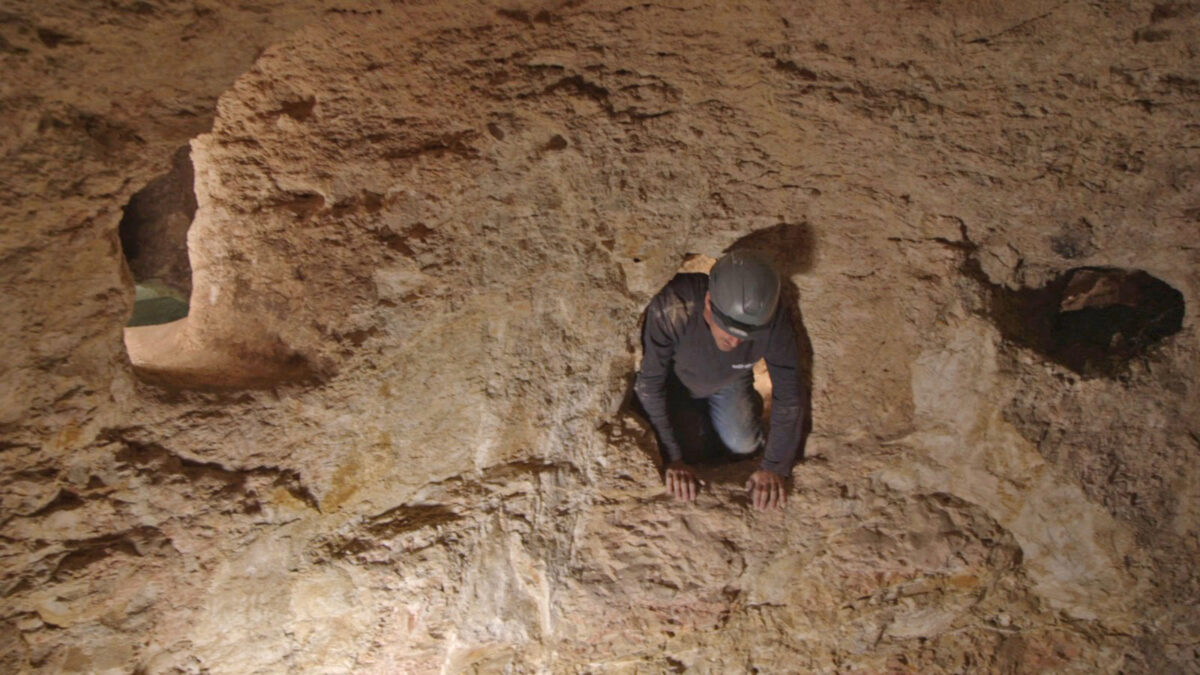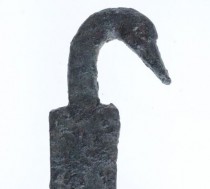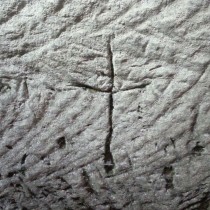Over the past few months students, local residents and soldiers have participated in an archaeological excavation at Huqoq near the Sea of Galilee.The excavations have provided a glance at a dramatic episode in the history of the Jewish people: the preparation of shelters for the Revolt of the Jews against the Romans led by Bar Kokhba in 132–136 CE.
The excavation also revealed that as part of the preparations for the First Revolt, in 66 CE, and the Bar Kokhba Revolt, in 132 CE, the residents of Huqoq converted the water cistern (dug during the Second Temple period) into a tunnel complex. In addition, during a time of danger, they broke one of the walls of the mikveh and dug a tunnel into other cavities. Several tunnels allowed maneuvering in narrow, low spaces underneath the houses. In this underground system, the largest and most impressive discovered in the Galilee, there are about eight chambers with connecting tunnels dug at 90 degrees to hamper the heavily armed Roman soldiers chasing the rebels. The excavation also yielded hundreds of broken clay and glass dishes, an impressive ring with a mount for a precious stone (the stone itself was not found), and other fascinating finds.
Huqoq is known as a Jewish town from the Early Roman period, about 2,000 years ago. The Jerusalem and Babylonian Talmuds mention Rabbi Pinhas and Rabbi Hezekiah, sages from the third and fourth centuries CE, who were based in the area. On the hilltop, near the tunnel complex, a synagogue with impressive and unique mosaics dating to the Byzantine period was discovered. The synagogue was dug since 2011 by an expedition from North Carolina University, headed by Professor Jodi Magness.
“The tunnel complex provides a glance at a tough period for the Jewish population in Huqoq and the Galilee in general,” say excavation directors Uri Berger of the Israel Antiquities Authority and Prof. Yinon Shivtiel of the Zefat Academic College. “However, the story that the site tells is also an optimistic story of an ancient Jewish town that managed to survive historical tribulations.” They add that “it is a story of residents who, even after losing their freedom, and after many hard years of revolts, came out of the hiding complex, and established a thriving village, with one of the most impressive synagogues in the area.”
The discovery of the hiding complex can also contribute to a decades-long debate among researchers on whether the Bar Kokhba Revolt reached the Galilee or remained within the confines of Judea and central Israel. Based on different findings, Berger and Shivtiel date the inner parts of the tunnel complex to the days of the outbreak of the Second Revolt, together with the understanding that several of the ancient facilities were first used during the First Revolt. “It is not certain that the complex was used for hiding and escaping during the Second
Revolt, but it does appear to have been prepared for this purpose,” they say. “We hope future excavations will bring us closer to the answer.”





